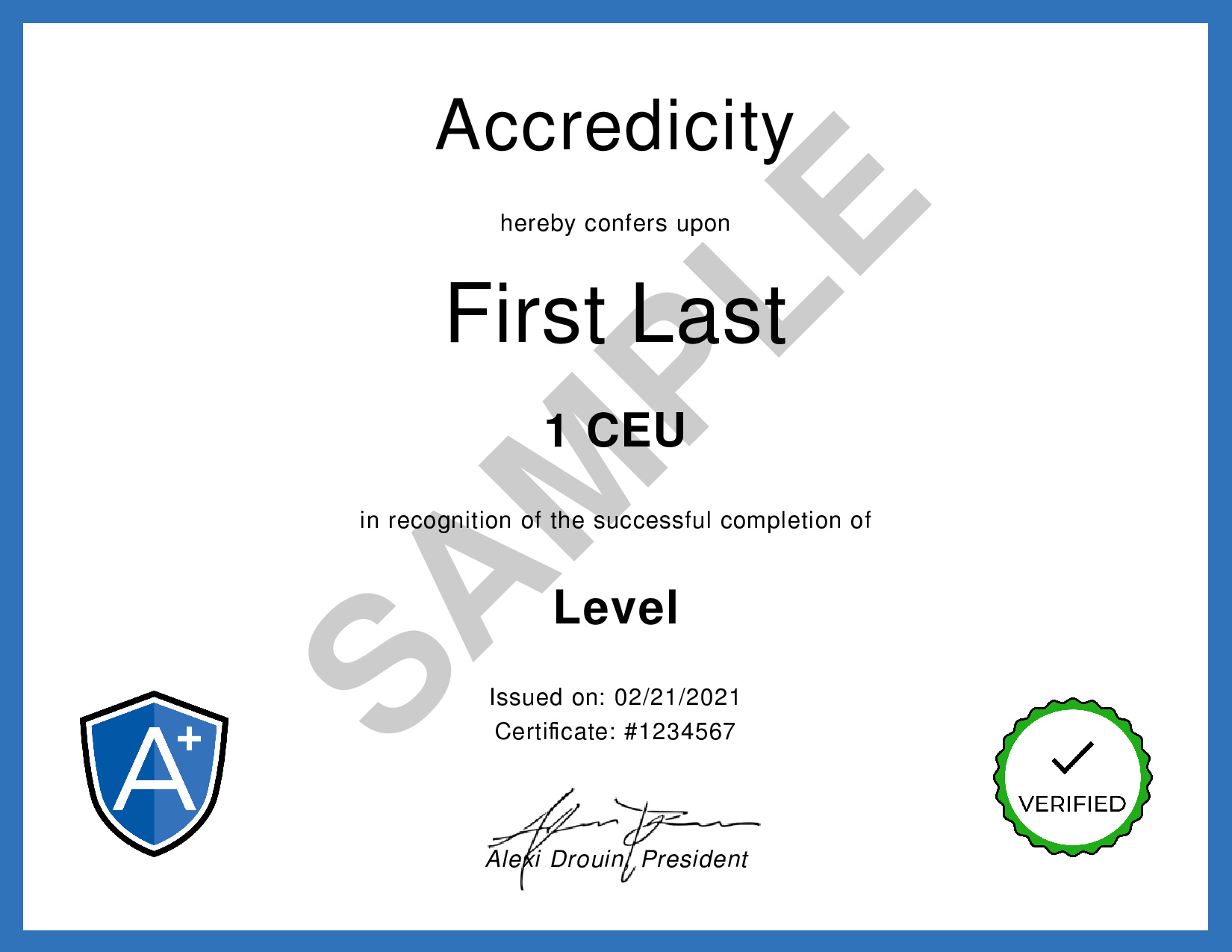The Explainer: How To Be A Disruptor | HBR
Reference: Harvard Business Review. (2019, July 09). The Explainer: How to Be a Disruptor [Video]. YouTube.
We Make Your Education Count

Get the Credit You Deserve and Become the Most Attractive Job Candidate by Earning and Posting A+ Badges to Your Linkedin Profile.
Sign Up to Get Started at Accredicity
Discover how to become a disruptor and reshape markets with disruptive innovation.How to Be a Disruptor? Harvard Business School professor Clayton Christensen explains how small, young companies can challenge industry giants. Disruptive innovation works by offering a basic, low-cost alternative that appeals to everyday customers. Big players focus on sustaining innovation, but overserve with features customers don't want to pay for. The disruptor improves its product to appeal to more customers, before the incumbent notices. A classic example is steel mini mills that first produced low-quality rebar, then moved to sheet steel. More recent examples include makers like Toyota and Hyundai. To fight back, industry giants must launch their own disruptive innovations, using a separate business model and growth expectations. Procter & Gamble's Crest White Strips is an example of a successful disruptor. Disruptive innovation creates new markets and reshapes existing ones. To achieve growth, businesses must learn to be a disruptor. Learning Outline1. The concept of disruptive innovation: A small, young company can beat an industry giant by providing simple, low-cost alternatives that the big players ignore. Instructional ContentInnovation is a key ingredient for success in the modern business world. Disruptive innovation is a term coined by Harvard Business School professor Clayton Christensen and it is a way for small, young companies to compete with industry giants. Disruptive innovation works by providing a basic, low-cost alternative to existing products or services. This approach allows the disruptor to capture market share from the larger incumbent companies who are focused on sustaining innovation, upgrading existing products and services to attract higher-paying customers. The classic example of disruptive innovation is the steel mini mills which first produced low-quality rebar, then moved to sheet steel, stealing business from the large mills that had been dominant. More recent disruptors include makers like Toyota and Hyundai, which launched with economy models then added luxury features and brands. The only way for industry giants to fight back is by launching their own disruptive innovations. To succeed, they must treat the project as a separate unit with a different business model and growth expectations, as well as segment customers by job, not by product, market size, or demographics. Disruptive innovation creates new markets and reshapes existing ones. To achieve growth in a fast-changing world, one should strive to be a disruptor. By understanding how disruptive innovation works, businesses of all sizes can use this approach to compete and succeed in the modern business world. Leadership
|

Disruptive innovation is like a small, brave warrior that takes on an industry giant. The giant is focused on bigger and better customers with more money to spend, while the disruptor offers a simpler, cheaper product to all the regular customers. As the giant keeps improving their product, the disruptor's product gets better and better too, until it's taken over the market! It's like a mini-mill making low-quality rebar, then upgrading to sheet steel, taking business away from the big guys. Big companies can fight back by creating their own disruptive innovations, but they have to think outside the box and look at the job people need to get done. It's like Procter & Gamble coming up with Crest White Strips, a cheap alternative to expensive dental services. Disruptive innovation can create new markets and reshape old ones, so make sure you're the disruptor, not the disrupted! Video Quotes1. "Big players focus on sustaining innovation, upgrading existing products and services to attract higher-paying customers. But soon they start to ignore all the regular customers who just want simple, low-cost alternatives. That's where the entrepreneurial company jumps in with that basic offering." - Clayton Christensen 2. "The only way for industry giants to fight back is by launching their own disruptive innovations." - Clayton Christensen 3. "Disruptive innovation creates new markets and reshapes existing ones. To achieve growth in a fast-changing world, you want to be a disruptor." - Clayton Christensen Competencies1. Creativity and Innovation Learning Outcomes1. Understand: Identify and describe the concept of disruptive innovation and its applications. Sample Answers1. Disruptive innovation is a strategy used by small, young companies to outcompete larger industry giants. This is done by offering simpler, low-cost alternatives to products or services, which the big players had been ignoring. As the disruptor improves its product, it begins to take over the market. 2. To fight back, industry giants must launch their own disruptive innovations. This requires creating a separate unit with different business models and growth expectations. Additionally, they must segment customers by job, not by product, market size, or demographics. 3. Disruptive innovation can create new markets and reshape existing ones. It is important for companies to be a disruptor to achieve growth in a fast-changing world. This includes developing basic, low-cost ways to get the job done and understanding what job the customer needs to get done. Clayton ChristensenClayton Christensen is the Kim B. Clark Professor of Business Administration at the Harvard Business School and a renowned innovation expert. He is the author of several books, including The Innovator's Dilemma and The Innovator's Solution, and is widely considered one of the founders of disruptive innovation theory. He has consulted for Fortune 500 companies, advised governments, and lectured around the world on disruptive innovation and how it has changed the nature of competition. His work has been featured in The Wall Street Journal, The New York Times, The Harvard Business Review, and many other publications. He is an expert on how to be a disruptor because he has studied and written extensively on the topic of disruptive innovation and how it has opened up new markets and changed the competitive landscape. He is also a Senior Partner at Innosight, a consulting firm that specializes in helping companies develop disruptive strategies. Innosight Learning DesignThe three competencies of Creativity and Innovation, Vision and Strategic Thinking are essential elements of successful leadership. By understanding and applying these competencies, leaders can effectively make decisions that will help their organization reach their goals. Having a vision is important for leaders in order to set goals, motivate staff, and create a roadmap for the organization to follow. Visionary leaders are able to look ahead and see the potential in the future, as well as how to get there. Strategic thinking is also essential for any leader. Leaders must be able to analyze and assess the current situation, and create an action plan to move forward. Strategic thinking involves looking at all the different options and weighing the pros and cons of each in order to make the best decision. In order to help build these competencies, a framework such as experiential learning can be utilized. Experiential learning involves actively engaging in activities and tasks that help build the competencies. For example, activities such as role playing, simulations, and problem-solving tasks can help build the competencies of creativity and innovation, vision, and strategic thinking. Through these activities, students will be able to gain a better understanding of the competencies and how to apply them in the workplace. AssessmentQ: What is an example of a disruptive innovation? Answer: C. Steel mini mills' low-quality rebar Questions1. What is disruptive innovation and how does it differ from sustaining innovation? KeywordsDisruptive Innovation, Clayton Christensen, Steel Mini Mills, Toyota Hyundai, Procter Gamble, Crest White Strips, Sustaining Innovation, Job Customers, Low-Cost Alternatives, Industry Giants, New Markets, Growth Expectations Facts1. Disruptive innovation is a strategy used to compete against industry giants by providing basic, low-cost alternatives. Trends1. Develop a marketing campaign for industry giants to highlight the advantages of disruptive innovation in comparison to traditional approaches. SourceThis learning instructional guidance was formulated using the GPT-3 language model created by OpenAI. ShareBe a disruptor! Innovate to beat the industry giants by providing customers with simple, low-cost alternatives. #disruptiveinnovation #growth #sustaininginnovation #startup #entrepreneur 💡 @Accredicity |








 12 Creds - Leadership
12 Creds - Leadership



